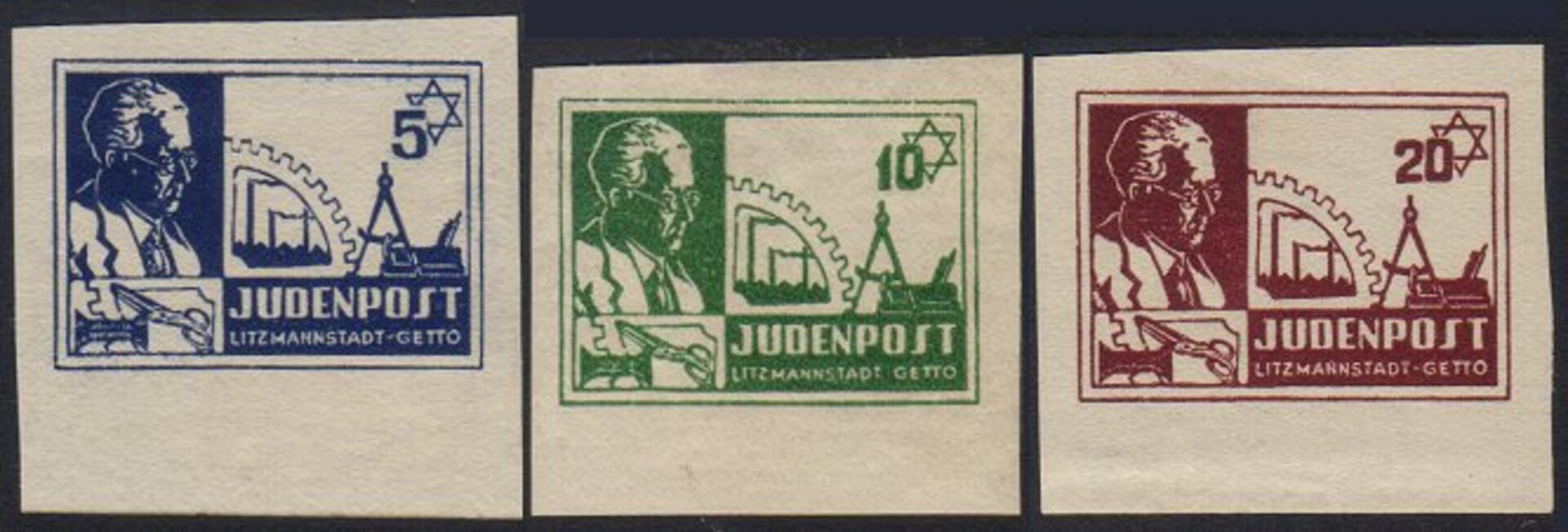The Litzmannstadt Ghetto stamps
Few stamp designs give us so much history.
Under German occupation the Polish city of Lodz was renamed "Litzmannstadt" and very quickly the Jewish population of around 250,000 came under pressure as the Ghetto, located in the poorest part of city was closed and all personal interaction with the outside world was forbidden.
The Germans chose Chaim Mordechai Rumkowski as head of the Jewish Council, granting him apparent autonomy. Rumkowski established post offices and ran a contest for stamps to be used for correspondence within the Ghetto. It is likely he saw the opportunity to raise precious funds from collectors, perhaps even those amongst the occupying forces.
Chaim Mordechai Rumkowski (February 27, 1877 - August 28, 1944) was himself a Polish Jew and believed that by organizing the ghetto as an industrial site he might ensure Jewish survival. The winning stamp design tells much of the ghettos tragic tale. The head is that of Rumkowski himself and the industrial imagery spoke largely to the German overlords who would, it must have been hoped, value the ghettos industriousness.
Before the Nazi German invasion of Poland, Rumkowski was director of an orphanage. On October 13, 1939, the Nazi occupation authorities appointed him the Judenälteste ("Elder of the Jews”). In this position he reported directly to the Nazi ghetto administration headed by Hans Biebow, a ruthless administrator concerned with the ghetto's productivity and his own personal gain. Directly responsible for starving the ghetto's population and he assisted the Gestapo in rounding up Jews.
In 1944, following Russian advances, the Germans proceeded to liquidate the ghetto and Biebow arranged for large burial pits to be dug for the few hundred remaining Jews. In August, Rumkowski and his family voluntarily joined the last transport to Auschwitz and were murdered there the same month. Many had come to see Rumkowski as chief collaborator and it has been suggested that fellow inmates murdered him. History may judge him in a slightly better light, the Lodz ghetto survived two years longer than the Warsaw ghetto and a few thousand inhabitants ultimately survived.
The first Ghetto stamps were issued on March 9, 1944. Soon after the Germans decided the stamps wouldn't be permitted, and only a few were sold and very little mail bearing them survived. The real tragedy isn’t philatelic of course. As Jews were shipped in to the ghetto the population swelled to over 200,000 - but by the time the Russians liberated the area only 877 remained alive.

 General
General
 General
General
 General
General